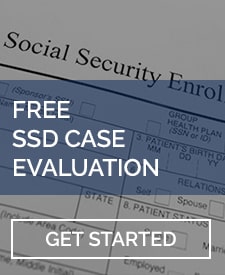Introduction
In the complex realm of medical intricacies, a social security disability attorney can help unravel the mystifying enigma of cataplexy, weaving threads of muscle weakness and conscious awareness. Drawing upon more than two decades of experience navigating personal injury and social security cases, I stand poised, alongside a team of legal experts, to shed light on the question: Is cataplexy indeed a disability? This comprehensive exploration, guided by the expertise of a seasoned social security disability attorney, delves deep into the labyrinthine corridors of cataplexy, its relationship with narcolepsy, and the potential pathways that can lead to securing vital disability benefits.
Deciphering the Cataplexy Puzzle

Unveiling Cataplexy’s Essence
Cataplexy, an intricate medical condition, manifests through sudden bouts of muscle weakness, coexisting with heightened cognitive awareness. If you’ve witnessed an episode of cataplexy, you’ve seen an individual’s muscles give way suddenly, leading to a collapse. These occurrences often arise due to emotions or stress, primarily during waking hours. Remarkably, cataplexy is distinctively a brain disorder and falls within the realm of narcolepsy, a sleep disorder originating from central nervous system irregularities. The foundation of narcolepsy rests on the deficiency of hypocretin, a neurotransmitter pivotal in regulating sleep. This deficiency is believed to stem from the immune system attacking the very brain components responsible for hypocretin production.
The Interplay with Narcolepsy
Cataplexy’s intricate dance intertwines with narcolepsy, creating a tapestry of related sleep disorders. While cataplexy unveils its dramatic muscle weakness episodes, narcolepsy casts a broader net encompassing varied sleep-related maladies. Notably, narcolepsy’s root cause often points to the absence of hypocretin, a neurotransmitter crucial for regulating sleep.
Navigating the Complexities of Cataplexy and Narcolepsy
The Symbiotic Relationship
While seemingly disparate, narcolepsy and cataplexy frequently coexist, their trajectories intertwined within the realm of sleep disorders. A diagnosis of narcolepsy introduces two possibilities: narcolepsy with cataplexy or narcolepsy without cataplexy. This interplay underscores the complex dynamics between these conditions, a critical aspect in navigating the intricate terrain of disability evaluation.
Embracing the Challenges of Narcolepsy with Cataplexy
Exposing the Burden
The weight of narcolepsy with cataplexy reverberates through daily life with profound magnitude. The relentless onslaught of extreme drowsiness, unanticipated sleep episodes, and sudden muscle weakness imposes substantial limitations. Activities as routine as driving and employment maintenance evolve into treacherous pursuits due to the unpredictable nature of these symptoms. The potential hazards extend not only to the afflicted individual but also to those in their immediate vicinity.
Seeking Relief: Comprehensive Treatment Approaches
Addressing narcolepsy with cataplexy demands a multi-faceted approach to therapy. Pharmacological intervention, encompassing anti-depressants and stimulants, forms the bedrock of management. Accommodating symptoms entails adhering to structured schedules, incorporating daytime naps, engaging in physical activity, and refraining from substances that exacerbate symptoms. The focal point shifts from eradicating symptoms to enhancing quality of life, as narcolepsy with cataplexy continues to influence daily existence.
Navigating the Landscape of Disability Benefits

Demystifying SSD Insurance
Social Security Disability (SSD) insurance materializes as a lifeline for individuals grappling with debilitating medical conditions. The inception of this program is rooted in individuals’ taxation based on income, conferring entitlement to benefits during times of vulnerability. However, the path to eligibility is nuanced. Qualification pivots on the history of paying Social Security taxes for at least five of the preceding ten years. Upon meeting this threshold, the Social Security Administration (SSA) commences a comprehensive evaluation to determine disability status.
The Intricate Five-Step Assessment
The SSA employs a meticulous five-step assessment process to gauge eligibility for disability benefits. The journey commences with scrutinizing substantial gainful activity (SGA). Earnings that surpass predetermined benchmarks lead to disqualification. Conversely, earnings below SGA or the absence of employment propel the evaluation to the next phase.
Establishing Severe Impairment
Step two mandates substantiating severe physical and/or mental impairment. The term “severe” necessitates demonstrating an impact exceeding minimal thresholds. Supported by comprehensive medical records, this phase functions as a sieve to identify cases meriting consideration.
Role of Listings in Determining Eligibility
Step three entails evaluating the relevance of the SSA’s listings of impairments. These listings encompass conditions classified as severely disabling. While a dedicated listing for narcolepsy with cataplexy may be absent, alignment with Listing 11.02 for epilepsy becomes a viable avenue, contingent upon demonstrating equivalent symptoms and limitations.
The Crucial Residual Functional Capacity (RFC) Analysis
In instances where alignment with listings is elusive, the SSA delves into an RFC (Residual Functional Capacity) assessment. This evaluation gauges an individual’s physical and mental capacity amidst the backdrop of their symptoms. The ultimate objective is to ascertain whether an individual can undertake past work or alternative roles within the national economy.
Embarking on the SSD Application Process
Venturing into the SSD application process demands resolve, meticulous documentation, and adept guidance. Acknowledging the intricacies, the LaBovick Law Group stands poised to alleviate the burdens accompanying this pursuit. Our unwavering commitment resonates through every stage, as we champion your cause, transforming a potentially daunting journey into one guided by empowerment and justice.
Conclusion
As the journey through the intricate tapestry of cataplexy unfolds, one truth resonates: Knowledge is the beacon guiding us through uncharted waters. In the realm of narcolepsy with cataplexy, empowerment is rooted in understanding, supported by a steadfast ally – the LaBovick Law Group. Together, we traverse the landscape of disability evaluation, securing benefits that mirror your rights and needs. Reach out to us at (561) 623-3681, igniting a path that intertwines empowerment and justice, even within the complexities of narcolepsy with cataplexy.
Frequently Asked Questions
Can narcolepsy with cataplexy be inherited?
Narcolepsy with cataplexy is not a hereditary condition, as familial cases constitute a small percentage.
Are there specific medications for managing narcolepsy with cataplexy?
Pharmacological interventions, including anti-depressants and stimulants, form the cornerstone of narcolepsy with cataplexy management.
What criteria underpin the eligibility for Social Security Disability (SSD) insurance?
SSD insurance necessitates a history of paying Social Security taxes for at least five of the preceding ten years.
Are narcolepsy with cataplexy cases reviewed under specific SSA Listings?
Although a dedicated Listing for narcolepsy with cataplexy is absent, alignment with Listing 11.02 for epilepsy is plausible, contingent upon equivalent symptoms and limitations.




